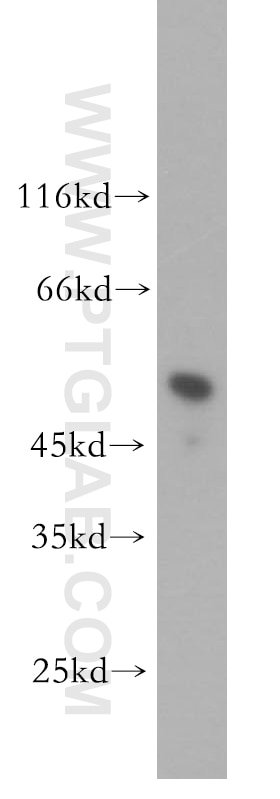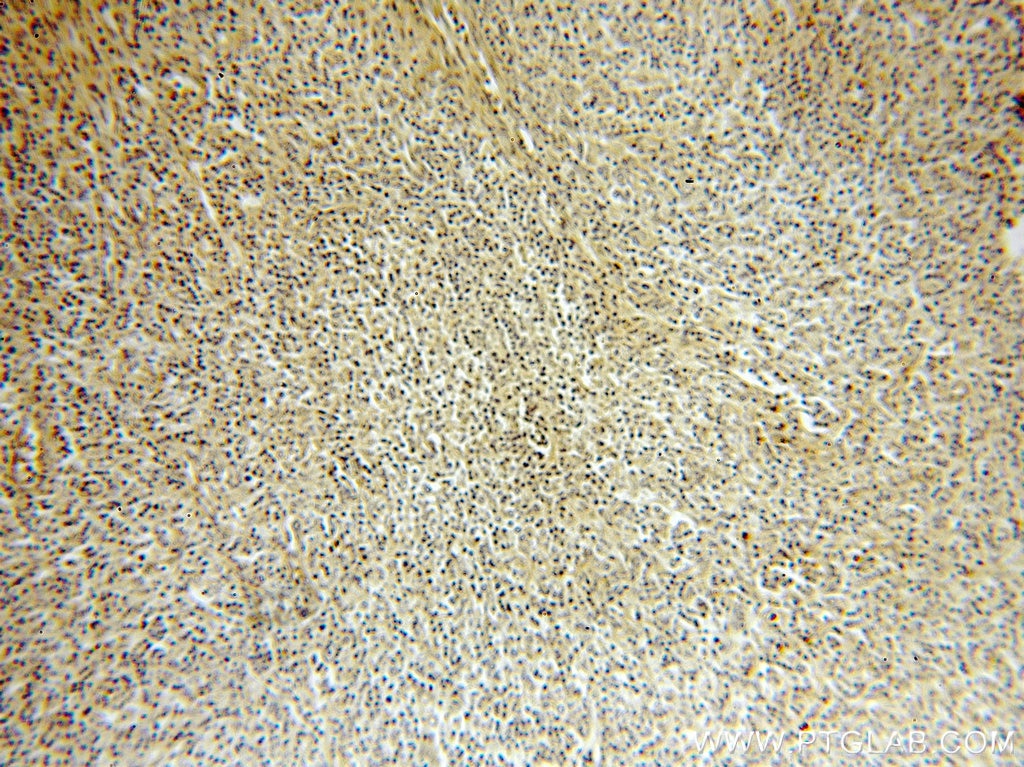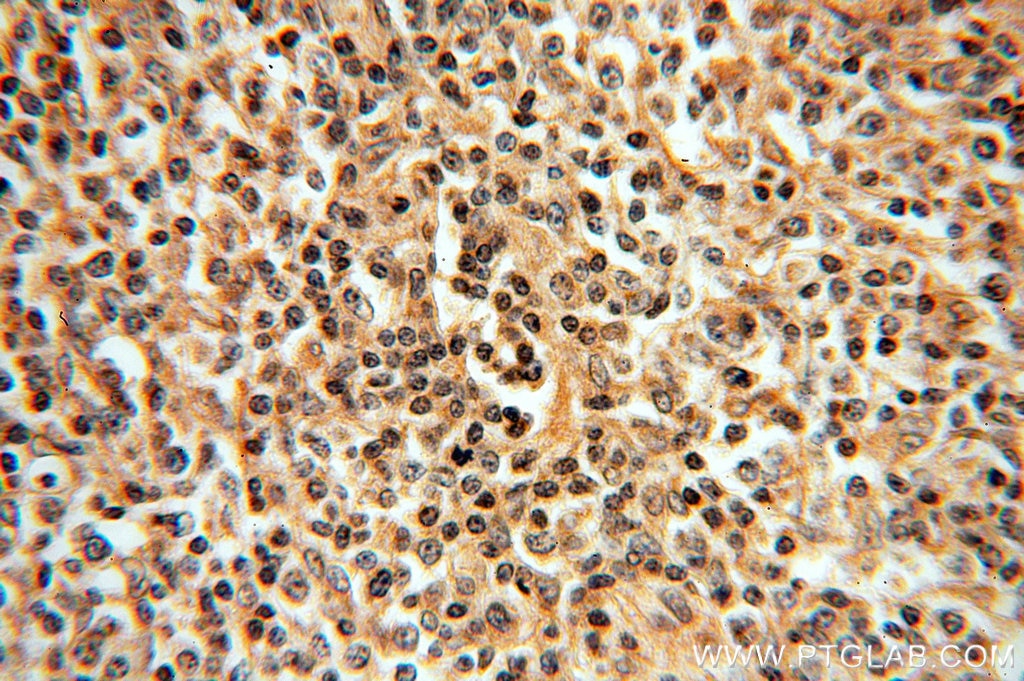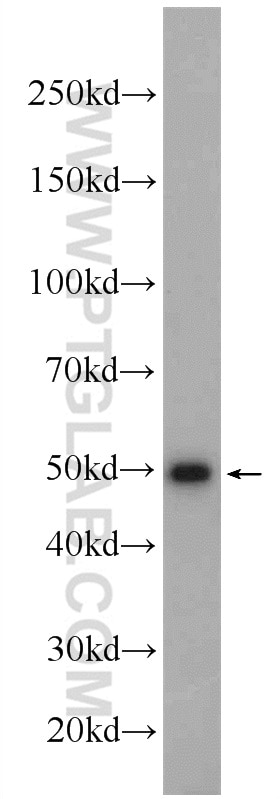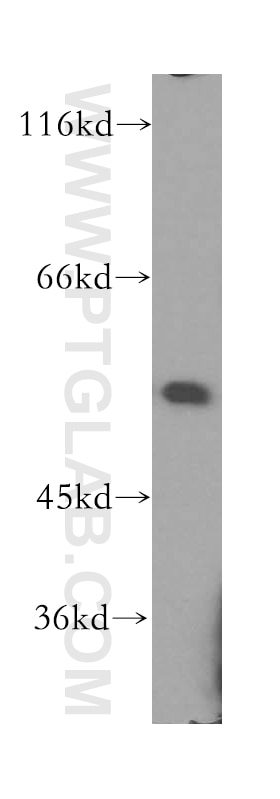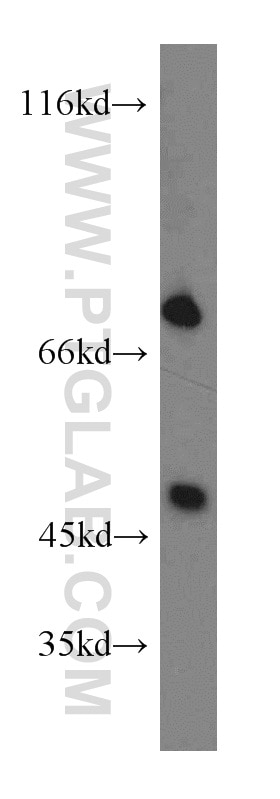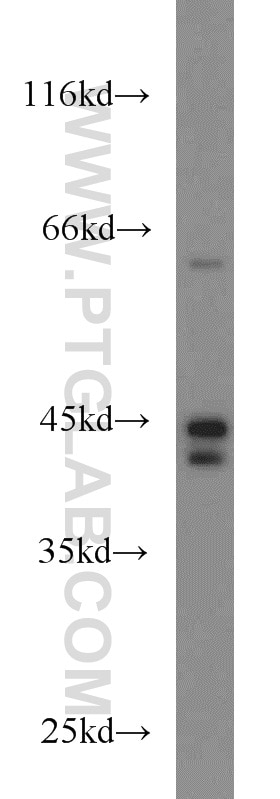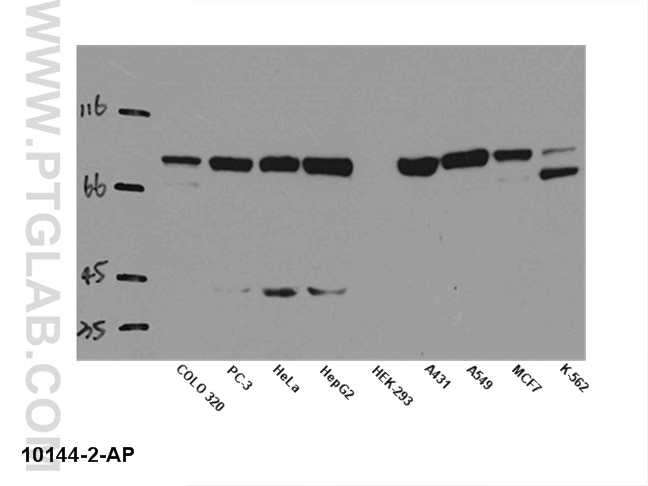Anticorps Polyclonal de lapin anti-IRF8
IRF8 Polyclonal Antibody for WB, IHC, ELISA
Hôte / Isotype
Lapin / IgG
Réactivité testée
Humain, rat, souris
Applications
WB, IF, IHC, ELISA
Conjugaison
Non conjugué
N° de cat : 18977-1-AP
Synonymes
Galerie de données de validation
Applications testées
| Résultats positifs en WB | tissu splénique de souris |
| Résultats positifs en IHC | tissu de lymphome humain il est suggéré de démasquer l'antigène avec un tampon de TE buffer pH 9.0; (*) À défaut, 'le démasquage de l'antigène peut être 'effectué avec un tampon citrate pH 6,0. |
Dilution recommandée
| Application | Dilution |
|---|---|
| Western Blot (WB) | WB : 1:500-1:2000 |
| Immunohistochimie (IHC) | IHC : 1:50-1:200 |
| It is recommended that this reagent should be titrated in each testing system to obtain optimal results. | |
| Sample-dependent, check data in validation data gallery | |
Applications publiées
| WB | See 11 publications below |
| IHC | See 3 publications below |
| IF | See 1 publications below |
Informations sur le produit
18977-1-AP cible IRF8 dans les applications de WB, IF, IHC, ELISA et montre une réactivité avec des échantillons Humain, rat, souris
| Réactivité | Humain, rat, souris |
| Réactivité citée | rat, Humain, souris |
| Hôte / Isotype | Lapin / IgG |
| Clonalité | Polyclonal |
| Type | Anticorps |
| Immunogène | Peptide |
| Nom complet | ICSBP1 |
| Masse moléculaire calculée | 48 kDa |
| Poids moléculaire observé | 48 kDa |
| Numéro d’acquisition GenBank | NM_002163 |
| Symbole du gène | IRF8 |
| Identification du gène (NCBI) | 3394 |
| Conjugaison | Non conjugué |
| Forme | Liquide |
| Méthode de purification | Purification par affinité contre l'antigène |
| Tampon de stockage | PBS avec azoture de sodium à 0,02 % et glycérol à 50 % pH 7,3 |
| Conditions de stockage | Stocker à -20°C. Stable pendant un an après l'expédition. L'aliquotage n'est pas nécessaire pour le stockage à -20oC Les 20ul contiennent 0,1% de BSA. |
Informations générales
IRF8 also named as ICSBP1, is a transcription factor of the IFN regulatory factor (IRF) family. The IRF family proteins bind to the IFN-stimulated response element (ISRE) and regulate expression of genes stimulated by type I IFNs, namely IFN-alpha and IFN-beta. IRF family proteins also control expression of IFN-alpha and IFN-beta-regulated genes that are induced by viral infection. IRF8 specifically binds to the upstream regulatory region of type I IFN and IFN-inducible MHC class I genes (the IFN consensus sequence (ICS)). It plays a negative regulatory role in cells of the immune system. It is predominantly in lymphoid tissues.
Protocole
| Product Specific Protocols | |
|---|---|
| WB protocol for IRF8 antibody 18977-1-AP | Download protocol |
| IHC protocol for IRF8 antibody 18977-1-AP | Download protocol |
| Standard Protocols | |
|---|---|
| Click here to view our Standard Protocols |
Publications
| Species | Application | Title |
|---|---|---|
J Autoimmun TIGIT-Fc fusion protein alleviates murine lupus nephritis through the regulation of SPI-B-PAX5-XBP1 axis-mediated B-cell differentiation | ||
Mater Sci Eng C Mater Biol Appl The unique regulation of implant surface nanostructure on macrophages M1 polarization. | ||
Transl Lung Cancer Res Cross-talk of pyroptosis and tumor immune landscape in lung adenocarcinoma. | ||
Life Sci Berberine regulates macrophage polarization through IL-4-STAT6 signaling pathway in Helicobacter pylori-induced chronic atrophic gastritis. | ||
Life Sci Mechanism of berberine in treating Helicobacter pylori induced chronic atrophic gastritis through IRF8-IFN-γ signaling axis suppressing. | ||
Environ Toxicol Resveratrol alleviates aluminum-induced intestinal barrier dysfunction in mice. |
